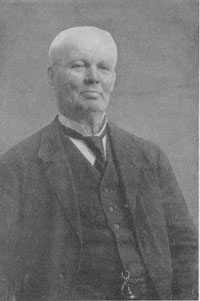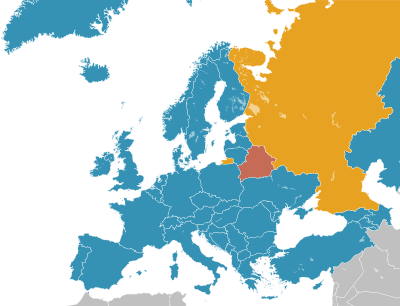
A guillotine is an apparatus designed for efficiently carrying out executions by beheading. The device consists of a tall, upright frame with a weighted and angled blade suspended at the top. The condemned person is secured with a pillory at the bottom of the frame, holding the position of the neck directly below the blade. The blade is then released, swiftly and forcefully decapitating the victim with a single, clean pass; the head falls into a basket or other receptacle below.

Decapitation is the total separation of the head from the body. Such an injury is inevitably fatal to humans and most animals, since it deprives the brain of oxygenated blood, while all other organs are deprived of the involuntary functions that are needed for the body to function.

Capital punishment in the United Kingdom predates the formation of the UK, having been used within the British Isles from ancient times until the second half of the 20th century. The last executions in the United Kingdom were by hanging, and took place in 1964; capital punishment for murder was suspended in 1965 and finally abolished in 1969. Although unused, the death penalty remained a legally defined punishment for certain offences such as treason until it was completely abolished in 1998; the last execution for treason took place in 1946. In 2004, Protocol No. 13 to the European Convention on Human Rights became binding on the United Kingdom; it prohibits the restoration of the death penalty as long as the UK is a party to the convention.

Hamida Djandoubi was a Tunisian convicted murderer sentenced to death in France. He moved to Marseille in 1968, and six years later he was convicted of the Kidnapping, torture, and murder of 21-year-old Élisabeth Bousquet. He was sentenced to death in February 1977 and executed by guillotine in September that year., and also the last person to be lawfully executed by beheading anywhere in the Western world, although he was not the last person sentenced to death in France. Marcel Chevalier served as chief executioner.

An executioner, also known as a hangman or headsman, is an official who effects a sentence of capital punishment on a condemned person.

Capital punishment – the process of sentencing convicted offenders to death for the most serious crimes and carrying out that sentence, as ordered by a legal system – first appeared in New Zealand in a codified form when New Zealand became a British colony in 1840. It was first carried out with a public hanging in Victoria Street, Auckland in 1842, while the last execution occurred in 1957 at Mount Eden Prison, also in Auckland. In total, 85 people have been lawfully executed in New Zealand.

Capital punishment in France is banned by Article 66-1 of the Constitution of the French Republic, voted as a constitutional amendment by the Congress of the French Parliament on 19 February 2007 and simply stating "No one can be sentenced to the death penalty". The death penalty was already declared illegal on 9 October 1981 when President François Mitterrand signed a law prohibiting the judicial system from using it and commuting the sentences of the seven people on death row to life imprisonment. The last execution took place by guillotine, being the main legal method since the French Revolution; Hamida Djandoubi, a Tunisian citizen convicted of torture and murder on French soil, was put to death in September 1977 in Marseille.

Johan Alfred Andersson Ander was a convicted Swedish murderer and the last person to be executed in Sweden.

Capital punishment is forbidden by the Charter of Fundamental Rights and Freedoms of the Czech Republic and is simultaneously prohibited by international legal obligations arising from the Czech Republic's membership of both the Council of Europe and the European Union.

Capital punishment in Finland has been abolished de jure.
Capital punishment in Iceland was practiced until 1830, with 240 individuals executed between 1551 and 1830. The methods of execution included beheading, hanging, burning, and drowning. Danish laws were influential, particularly after Lutheranism's adoption in the 17th century. The last execution occurred in 1830, and the death penalty was abolished in 1928. Infanticide was a common crime, often committed by women, and many were sentenced to death, but their sentences were commuted. The last execution of an Icelander happened in Denmark in 1913. The death penalty was officially abolished in Iceland in 1928, and its reintroduction has been rendered unconstitutional since a 1995 constitutional revision.
Capital punishment is forbidden in Switzerland under article 10, paragraph 1 of the Swiss Federal Constitution. Capital punishment was abolished from federal criminal law in 1942, but remained available in military criminal law until 1992. The last actual executions in Switzerland took place during World War II.

Albert Gustaf Dahlman was a Swedish executioner. He was the last executioner in Sweden, as well as the last to carry out capital punishment in Sweden, the last by means of beheading by hand, and the last to execute a woman.

Capital punishment remained in Polish law until September 1, 1998, but from 1989 executions were suspended, the last one taking place one year earlier. No death penalty is envisaged in the current Polish penal law.

Capital punishment in modern Greece was carried out using the guillotine or by firing squad. It was last applied in 1972 during the military junta. The death penalty was abolished in stages between 1975 and 2005.

The 1978 Spanish Constitution bans capital punishment in Spain, except for wartime offences. Spain completely abolished capital punishment for all offenses, including in times of war, in October 1995.
Capital punishment in Thailand is a legal penalty, and the country is, as of 2021, one of 54 nations to retain capital punishment both in legislation and in practice. Of the 10 ASEAN nations, only Cambodia and the Philippines have outlawed it, though Laos and Brunei have not conducted executions for decades.

Murders and executions in Stockholm, Sweden have been documented since the 1280s, when King Magnus Ladulås ordered the execution of three magnates of the Privy Council, who had been accused of several "traitorous acts against the throne". The city's murders between the middle of the 15th century and the middle of the 17th century have been documented fairly well in the logs of Stockholm City Court. Violence with a deadly outcome was most common during the Middle Ages, a trend which had more than halved by the beginning of the 1700s. The most common cases of manslaughter and murder usually involved fights between men where alcohol was involved.

Sweden was a country with few witch trials compared to other countries in Europe. In Sweden, about four hundred people were executed for witchcraft prior to the last case in 1704. Most of these cases occurred during a short but intense period; the eight years between 1668 and 1676, when the witch hysteria called Det stora oväsendet took place, causing a large number of witch trials in the country. It is this infamous period of intensive witch hunt that is most well known and explored.
Capital punishment in Burkina Faso has been abolished. In late May 2018, the National Assembly of Burkina Faso adopted a new penal code that omitted the death penalty as a sentencing option, thereby abolishing the death penalty for all crimes.











